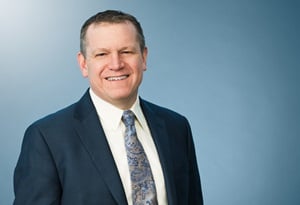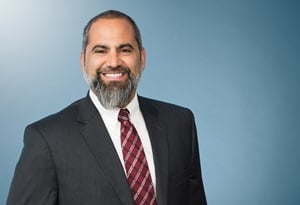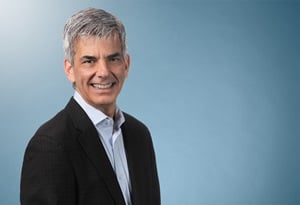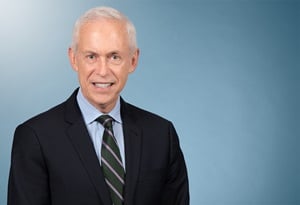2023 NFI Insurance Public Policy Summit Highlights “Balancing Act”
At a Glance
- FIO continues to advance its priorities, include cybersecurity, climate risk and DEI.
- NAIC President says execution on the NAIC’s core mission will continue to evolve and that she is open to innovation and technology — while noting the need to proceed carefully regarding AI.
- Federal and state legislators voiced support for the state-based system, with a common interest driving collaboration between state legislators and regulators.
The “balancing act” of insurance regulation across jurisdictions, policymakers, and stakeholders took center stage at the 18th Annual Networks Financial Institute Insurance Public Policy Summit on May 17 in Washington D.C. Co-sponsored by Faegre Drinker and Indiana State University’s Scott College of Business, the summit welcomed a wide range of public policy leaders commenting on top-of-mind issues for the insurance industry.
A View from Capitol Hill
Rep. Mike Lawler (R-NY), newly elected member of the U.S. House Financial Services Committee, provided candid remarks on the debt ceiling, housing policy, bridging the economic divide, border security and working with U.S. allies. Lawler stressed the need to break global reliance on China because it creates an opportunity for financial manipulation.
The representative also emphasized the importance of the state-based system of insurance regulation, drawing on his experience as a former New York Assemblyman focused on insurance issues.
Keynote on FIO Priorities
Steven Seitz, Director of the Federal Insurance Office (FIO), highlighted and provided an update on the Treasury Department’s six key insurance priorities:
Cybersecurity and Cyber Insurance: Seitz remarked that FIO continues to work with the federal Cybersecurity and Infrastructure Security Agency and the White House Office of the National Cyber Director and will be engaging with stakeholders as it continues assessing the need for advanced planning for the economic impact of catastrophic cyber events at the Federal level.
Climate Risk: FIO intends to remain at the forefront of policy conversations on the implications of climate-related financial risk.
Macro-prudential Supervision: Seitz noted an increased focus on capital adequacy and liquidity risk in light of recent developments in other financial sectors, and the growing interconnectedness of the insurance sector with the domestic and international financial system.
He also remarked on the ongoing transformation in the life sector through increased involvement of private equity firms, as owners and asset managers. FIO therefore continues to focus on liquidity, credit risk and capital adequacy, offshore reinsurance and interconnectedness, and potential conflicts of interest.
International Engagement: Current international priorities include finalization of the Insurance Capital Standard as a prescribed capital requirement and the related comparability assessment of the aggregation method, as well as implementation of the holistic framework for addressing systemic risk.
Diversity, Equity & Inclusion: FIO has emphasized the availability and affordability of insurance products, particularly for traditionally underserved communities and consumers, historically underrepresented populations, and low- and moderate-income persons. Continuing from a 2017 study on the importance of access to affordable auto insurance, FIO expects to complete an updated study in the upcoming months.
Terrorism Risk Insurance Program (TRIP): FIO’s key initiatives for administering the Terrorism Risk Insurance Program include issuing its annual TRIP report addressing the competitiveness of small insurers in the terrorism and risk insurance marketplace, and recently becoming a full member of the International Forum of Terrorism Risk (Re)Insurance Pools.
Real Perspectives on Artificial Intelligence
Faegre Drinker Partner Scott Kosnoff's conversation with Reva Schwartz of the National Institute of Standards and Technology (NIST) began with an in-depth discussion of NIST's risk management framework (RMF) and playbook, developed in response to a 2021 congressional mandate. Schwartz said the RMF is focused on trustworthy and responsible AI and is based on comments from over 240 organizations. NIST's goal was to gain buy-in through incorporating the community's ideas, demonstrating NIST's sociotechnical approach. Schwartz noted that NIST is concerned with harmful bias, not complete bias elimination, as not all biases are bad. Schwartz reminded the audience that the RMF is now available for use and that appropriate governance is extremely important.
Kosnoff and Schwartz also discussed ChatGPT (or generative AI). Schwartz believes that risks from generative AI are exacerbating already present AI risks. While there are some new risks with generative AI, Schwartz noted that once identified, the risks should be manageable. NIST is establishing a public working group for generative AI to create what NIST calls a “profile” — standalone applications of the RMF for specific fields to build.
Schwartz also stated that NIST stays close to EU developments through the Trade and Technology Council, and though NIST is not a regulatory body, it was influenced by the EU AI Act. Schwartz posited that a global convergence with AI policy may be coming as everyone recognizes that something has to be done, though it is not clear what.
Policymakers Unplugged: Perspectives from Peter Gallanis and Tom Sullivan
Faegre Drinker’s Sara Manske moderated a discussion among Tom Sullivan, recently Senior Associate Director at the Federal Reserve, and Peter Gallanis, president of the National Organization of Life & Health Insurance Guaranty Associations, who has announced his retirement in 2023. They brought unique experiences to discussing challenges past, present and future.
- The panelists believed the Dodd-Frank Act largely will live on and shape financial regulation into the foreseeable future. They emphasized the resiliency of the insurance industry, recognizing the distinction between the more than 400 banks and 600 pension plans that failed in 2008, and the limited impact felt by the insurance sector — crediting this success in part to enhanced supervision following the 1990 saving and loan crisis.
- In response to the recent bank failures, the panelists emphasized a need for regulators to not only learn from history but act swiftly when faced with similar patterns — such as the impact of higher interest rates on banks who borrow short and lend long (a different model than insurance).
- The panelists agreed that recovery and resolution planning is a useful theoretical instrument but are wary of any mandates imposed on internationally active insurance groups without sufficient consideration of practical application.
- Panelists identified the following issues to watch over the next five-to-ten years: macroeconomic matters, investments by and investments in insurance companies, restructuring mechanisms and the ability of reinsurers to fulfill their obligations.
Lightning Round on Industry Hot Topics with Insurance Trade Professionals
Robert Gordon, senior vice president of policy research and international at the American Property Casualty Insurance Association, Karalee Morell, senior vice president and general counsel at the Reinsurance Association of America, and Mariana Gomez-Vock, senior vice president of policy and legal for the American Council of Life Insurers, covered a wide range of “Industry Hot Topics,” moderated by Jigar Gandhi, head of life and health regulation and vice president at Swiss Re.
On data models and algorithms, Gordon noted the insurance industry has used AI for decades. He described AI as a screening system, used to analyze and route information to the right department so that people have better information for decisions. While he acknowledged the possibility of governance procedures developing, Gordon stressed that AI has the potential to be more of a solution than a problem.
On an activities-based approach to systemic regulation, Gomez-Vock expressed that the IAIS Holistic Framework endorsed by the Financial Stability Board offers a real-world example of what an activities-based approach to systemic risk would look like. Gordon noted that insurance is actually a systemic risk mitigator.
On a cyber backstop, Morrell viewed catastrophic cyber risks as significant, and she supports exploration of whether a federal backstop is needed. She maintained that cyber risks pose unique challenges and may require unique solutions. Morrell stated much work would be needed on what a federal program would look like and that she looks forward to working with FIO as they continue to analyze the issue.
On the creation of a new NAIC Privacy Model, the panelists agreed that NAIC and regulators’ willingness to listen to industry is encouraging. They are hopeful that the collaborative approach will allow the concerns expressed to be addressed as drafting proceeds.
On offshore reinsurance, Morrell noted that the genesis of some of the concerns about offshore reinsurance arose out of the life insurance and private equity industry, but the reaction has been to look at offshore reinsurance more broadly.
Leaders’ Conversation with NAIC President and President Elect
Roger Schmelzer, CEO of the National Conference of Insurance Guaranty Funds, made introductory remarks welcoming NAIC President and Missouri Director Chlora Lindley-Myers and NAIC President-Elect and Connecticut Commissioner Andrew Mais.
Director Lindley-Myers was interviewed by her successor, Commissioner Mais, in a thoughtful and engaging conversation about the future of the NAIC and the insurance landscape more broadly. She stated there will be changes to the NAIC in the future; however, the underlying goals remain the same. She noted that the execution on the NAIC’s core mission will continue to evolve, and that she is open to innovation and technology, while noting the need to proceed carefully regarding AI.
Lindley-Myers stated that, while there will always be tension between state and federal initiatives, she is willing to work with her federal counterparts and hopes that state-based regulation will have a collaborative, holistic effort with the federal government. States have the regulatory experience and first-hand knowledge of state developments that supports their role as primary insurance regulators.
She also highlighted that the U.S. is the largest marketplace in the world and has regulated that market well. She noted the importance of educating and alerting international counterparts to the U.S. regulatory experience, along with the importance of collaboration and partnership.
Common Goals in the Capital: Regulators and Legislators Developing Insurance Public Policy
Faegre Drinker’s Danny Lewallen led a discussion between Indiana Commissioner Amy Beard and Rep. Matt Lehman, Majority Floor Leader of the Indiana House of Representatives, who offered perspectives on the relationship between state legislators and insurance regulators.
Rep. Lehman maintained that NCOIL has given the NAIC a good platform to express concerns and that a mutual respect between the organizations has grown, grounded in their shared view of the importance of state-based insurance regulation.
While discussing Indiana’s recently passed insurance omnibus bill, which included Lehman’s insurance underwriting transparency bill, Commissioner Beard expressed the value of dialogue, even over disagreements. Rep. Lehman met with the Department on several occasions during the session regarding insurance-related issues; the collaborative meetings ultimately resulted in the inclusion of at least nine DOI initiatives in the omnibus bill.
How Politics is Expanding and Complicating ESG Criteria
Cindy Irani and Scott Chinn, both leaders of Faegre Drinker’s Public Issues ESG Initiative, provided insight into the interplay of politics in ESG through a CLE session moderated by Faegre Drinker’s Bob Mancuso. Among their key takeaways for insurance stakeholders:
- There is business pressure from customers, employees, shareholders and governments to take positions on social, political and electoral issues. The speed and variety of these threats transcend traditional ESG considerations.
- Most businesses report a lack of confidence in the ability to manage political risk and social change as among the most significant threats they face.
- Business can’t take a one-size-fits-all approach to respond. Company size, industry and regulatory context, staff experience, historical experience, geographic location, governance and corporate values are all important to planning and response.
Irani and Chinn also provided strategic considerations and action items for corporations to consider and analyzed a number of real-world scenarios.
The authors wish to acknowledge Erin Orr, Insurance Policy & Regulatory Affairs Analyst, for her contributions to this article.
The material contained in this communication is informational, general in nature and does not constitute legal advice. The material contained in this communication should not be relied upon or used without consulting a lawyer to consider your specific circumstances. This communication was published on the date specified and may not include any changes in the topics, laws, rules or regulations covered. Receipt of this communication does not establish an attorney-client relationship. In some jurisdictions, this communication may be considered attorney advertising.











